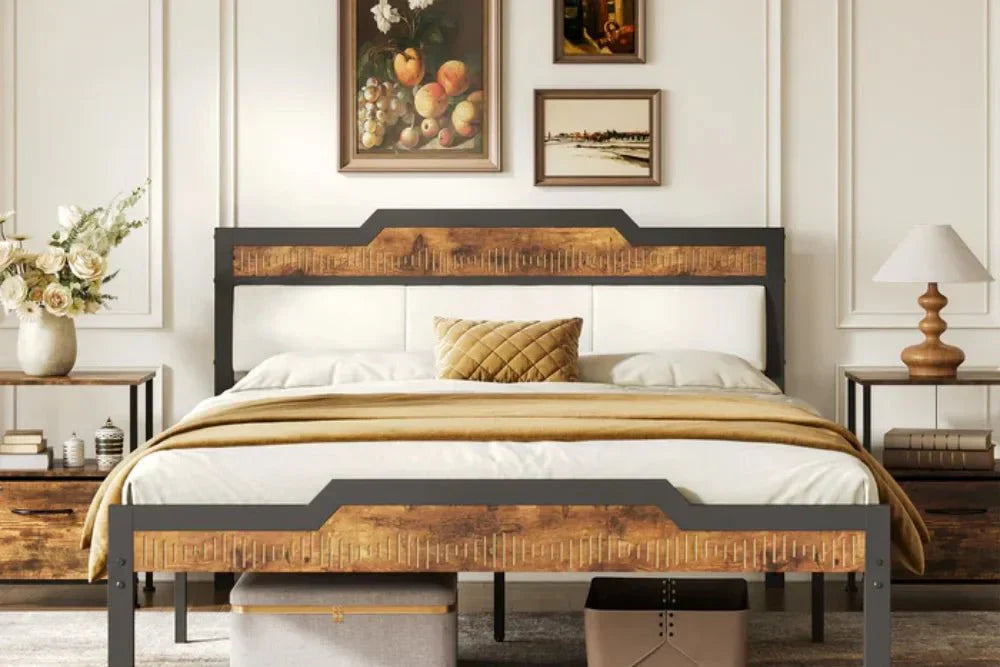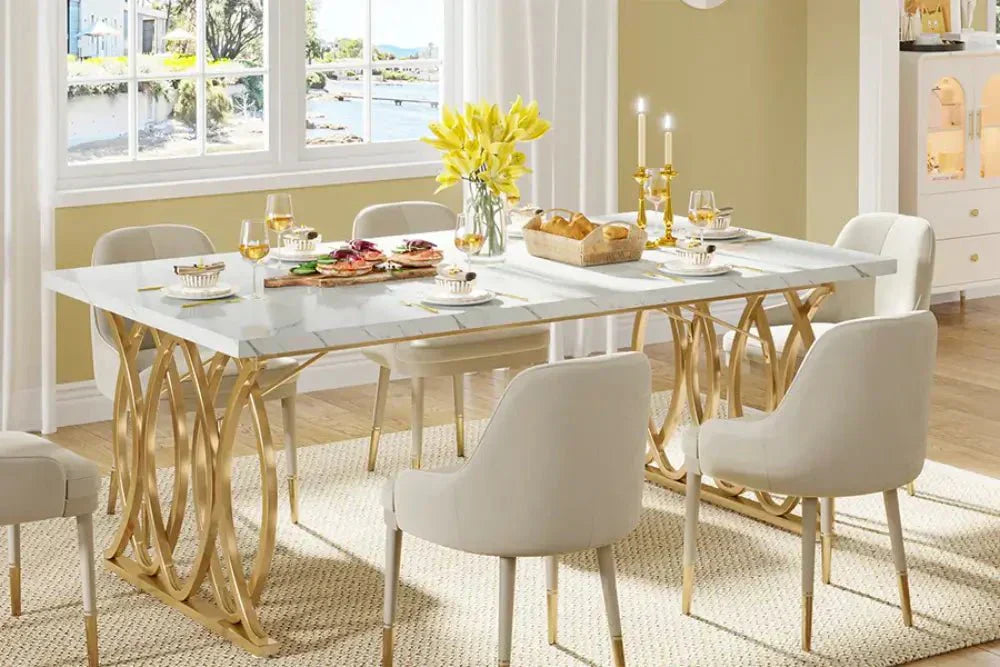It happens to the best of us—no matter how careful we are, wooden dining tables gradually gather signs of daily life. A faint scratch from moving a plate, a cloudy ring from a chilled glass, or a pale mark from a hot dish… We aim to use coasters and mats, but sometimes life has other plans.
In this guide, we’ll share practical ways to restore your table’s beauty and help you prevent future damage—so it remains a centrepiece of your home for years to come.
1. Know Your Wood Type
Before cleaning, it’s helpful to know what type of wood and finish your dining table has. Different woods respond differently to moisture, heat, and cleaning products.

- Finish Types: Lacquer, varnish, oil, or polyurethane. Glossy surfaces are often lacquered; matte, natural-looking ones may be oil-finished.
- Wood Types: Hardwoods like oak or maple resist scratches well. Softer woods like pine mark more easily. Engineered wood with veneer requires gentle care to avoid water damage.
If unsure, check your product information or details.
2. What Damages a Wooden Dining Table?
Common culprits include:
- Moisture: Spills and humidity may cause staining or swelling.
- Sunlight: Prolonged exposure can fade colour and weaken the finish.
- Heat: Hot items can leave white marks or burns.
- Abrasion: Cutlery, plates, and decor may cause scratches over time.
3. How to Protect Your Dining Table?

- Daily: Wipe with a soft, slightly damp cloth after use. Always use coasters and placemats.
- Weekly: Dust with a microfiber cloth. Use a wood-friendly polish monthly.
- Seasonally: Inspect for damage. Reapply protective wax or oil if needed. Keep the table away from direct sunlight and heat sources.
💡 Tribesigns Tip: Regular light polishing helps maintain the finish and adds a protective layer against spills and scratches.
4. Common Issues & Quick Repairs
Even with the good care, occasional marks may appear. Here’s how to gently address common problems without harming your table’s finish.

-
Light Scratches:
For fine surface marks, create a gentle polishing paste using equal parts white vinegar and olive oil. Apply with a soft cloth, following the wood grain. For slightly deeper scratches, a specialised wood touch-up pen or wax filler stick can effectively mask the damage. Rubbing the scratch gently with the cut side of a walnut can also help thanks to its natural oils. -
White Heat Marks or Water Rings:
Place a clean, thin cotton cloth over the mark and gently run a warm (not hot) iron over it for a few seconds. The heat helps lift moisture trapped under the finish. Alternatively, apply a small amount of petroleum jelly or mayonnaise to the stain, leave it for several hours, then gently wipe away. For lighter marks, a dab of non-gel toothpaste applied with a soft cloth can also work well. -
Dents or Indentations:
For small dents in unfinished or oil-finished wood, try the steam method: place a damp cloth over the dent and carefully apply a warm iron for a few seconds. The steam can cause the compressed wood fibres to swell back into place. Note: this method is not recommended for lacquered or veneered surfaces. -
Sticky Residues or Light Stains:
A paste made from baking soda and a little water can be gently rubbed onto the area with a soft cloth. This helps lift residue without scratching. Always wipe clean with a damp cloth afterwards and dry thoroughly.
5. Choosing the Right Cleaners
Using appropriate cleaning products is essential to preserve your table’s finish and appearance. Here’s what we recommend for safe and effective cleaning:
-
For Everyday Cleaning:
Use a soft, slightly damp microfiber cloth with a small amount of pH-neutral soap or a dedicated wood cleaner. Avoid oversaturating the surface, and always wipe dry immediately to prevent moisture penetration. -
For Grease or Fingerprints:
A solution of equal parts white vinegar and water can effectively cut through light grease and smudges. Apply sparingly with a soft cloth and buff gently. Due to its mild acidity, use this method only occasionally and always test on a small, hidden area first. -
To Nourish and Shine the Wood:
For oil-finished or unsealed wood, a mixture of two parts olive oil to one part white vinegar can restore natural lustre. Apply a small amount with a lint-free cloth, allow it to absorb for 10–15 minutes, then buff gently to reveal a soft, natural shine. -
For Polished or Lacquered Surfaces:
Choose a high-quality furniture spray or cream specifically designed for finished wood. Avoid silicone-based products, as they can create a slippery buildup that attracts dust over time.
⚠️ Tip: Before wiping your table, always make sure to wring out the cleaning cloth thoroughly, and follow up by drying the surface immediately. Excess moisture can penetrate the wood, leading to potential damage such as warping or staining.
6. What Not to Use
Knowing what to avoid can prevent accidental damage and keep your table in top condition. Steer clear of these common harmful products and practices:
-
Harsh Chemicals:
Avoid cleaners containing bleach, ammonia, or abrasive agents. These can strip the protective finish, cause discolouration, or dull the surface permanently. -
Rough Cleaning Tools:
Do not use scouring pads, stiff brushes, or coarse cloths. These can leave fine scratches that accumulate over time, diminishing the table’s appearance. -
Excess Moisture:
Never spray liquid directly onto the table. Too much water can seep into seams or cracks, leading to warping, swelling, or mould growth, especially in engineered wood. -
Silicone-Based Polishes:
While they may provide short-term shine, silicone-based products tend to leave a residue that attracts dust and makes future refinishing more difficult. -
Placing Hot or Wet Items Directly on the Surface:
Always use trivets, coasters, or mats. Repeated exposure to heat or moisture can cause irreversible damage to both solid and veneered tables.
7. Conclusion
A little regular care helps preserve your wooden dining table’s beauty and functionality. With gentle cleaning and timely maintenance, your table can stay in superb condition year after year.
At Tribesigns, we combine thoughtful design and durable materials to create furniture that fits seamlessly into your lifestyle—offering timeless appeal and everyday resilience.



